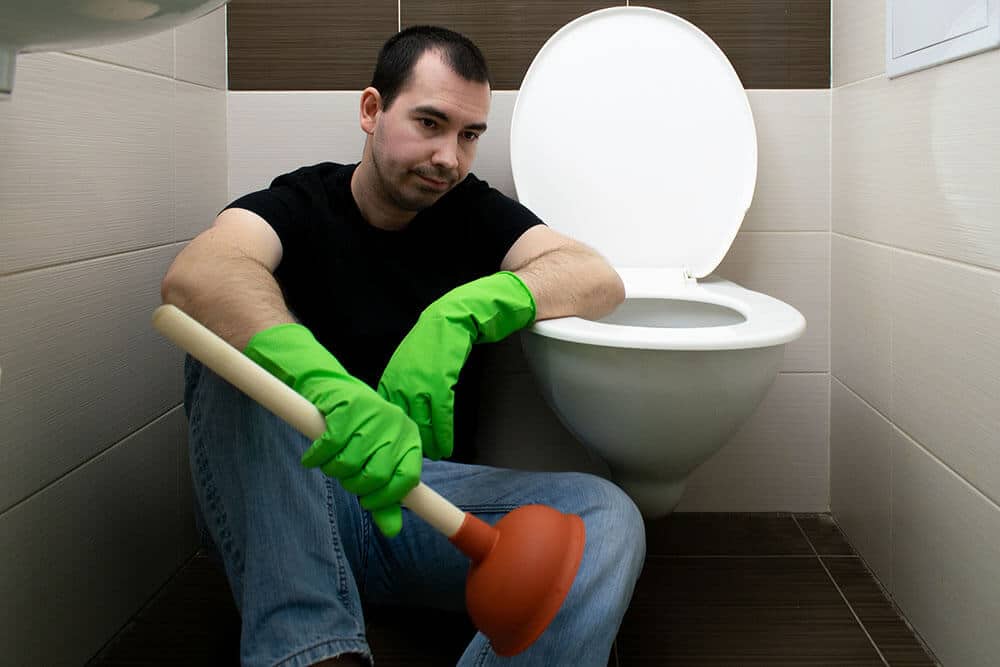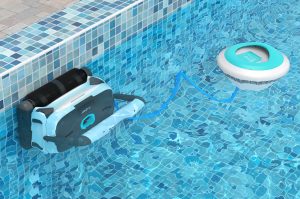If you ever found yourself standing in front of a clogged toilet, plunger in hand, wishing you could turn back time and somehow prevent this mess, you’re not alone.
A clogged toilet is a common, albeit frustrating, household issue that most of us have grappled with at some point. But what if I told you that with a little knowledge and some simple habits, you could drastically reduce the odds of facing this unpleasant situation?
The Self-Rectifying Toilet Myth – Will a Clogged Toilet Fix Itself?
If you’re nurturing the hope that your clogged toilet will unclog itself, you may be in for a bit of a disappointment. Much like a toddler smeared in chocolate, a clogged toilet will not always spontaneously clean itself.
This also depends on how clogged your toilet is. In certain cases, the clog may soften with time; while in most other cases, human intervention is necessary to unclog your toilet
The clog is typically a physical blockage that won’t simply dissolve or disappear over time. In fact, ignoring it might lead to more significant problems, such as leaks, overflowing, or even damage to your plumbing system.
Also read: How to Remove Mold from Shower Curtain
How long does it take for a toilet to unclog itself?
Well, in most cases, the answer is never. As mentioned earlier, clogs are usually caused by physical obstructions. Unless the blockage is something that could dissolve over time (like excessive toilet paper), it’s unlikely to disappear on its own.
However, in some cases, if the clog is minor and consists of material that can break down, it may resolve itself over time. But this could take anywhere from a few hours to a few days, and there’s no guarantee it will happen at all. It’s usually more efficient (and less stressful) to tackle the issue head-on.
Can a toilet be clogged and still flush?

In some cases, a toilet can be clogged and still flush – a deceptive act that could lead you to believe all is well. This usually happens when the clog isn’t complete, allowing some water and waste to pass through.
However, repeated flushing could cause the clog to become more substantial, leading to an overflow. If your toilet isn’t flushing as efficiently as usual, it’s best to investigate before the issue escalates.
Common Causes of a Clogged Toilet (Listicle)
- Excessive Toilet Paper: Using too much toilet paper is a common cause of clogs.
- Non-Flushable Items: Items like baby wipes, sanitary products, and even some types of thicker toilet paper can cause clogs.
- Foreign Objects: Kids’ toys, cell phones, and other unexpected items can surprisingly end up in the toilet and cause a clog.
- Plumbing Issues: Sometimes, the problem is with your plumbing, not what’s been flushed.
Signs of a Clogged Toilet
- Slow Draining: If your toilet drains slowly after flushing, it’s a sign of a potential clog.
- Frequent Plunging: If you’re having to plunge your toilet regularly, there’s likely a persistent clog.
- Overflowing: An overflowing toilet is a clear sign of a clog.
- Gurgling Sounds: If your toilet is making unusual sounds, it could be a sign of a clog forming.
Home Remedies to Unclog a Toilet
- Hot Water and Dish Soap: Pour a few cups of hot (but not boiling) water into the bowl followed by some dish soap. Wait for a few minutes and then try flushing. The heat and soap may help break down the clog.
- Baking Soda and Vinegar: Pour a cup of baking soda into the toilet bowl followed by two cups of vinegar. Wait about 30 minutes before flushing. The chemical reaction between the baking soda and vinegar can help dislodge the clog.
- Wire Coat Hanger: Straighten a wire coat hanger and use it to gently poke at the clog. Be careful not to scratch the porcelain.
- Plunger: The good old plunger is often your best bet. Make sure you have a good seal and then pump vigorously.
The tools to be used to unclog your toilet can be found at your nearest hardware store or purchased online on Amazon
Unclogging a Full Toilet Bowl: A Step-by-Step Guide

- Protect Your Surroundings: Lay towels or newspapers around the toilet to protect your floor from splashes.
- Use a Plunger: Ensure the plunger fully covers the hole. Push down gently to create a seal and then pull up sharply to dislodge the clog.
- Try a Toilet Auger: If the plunger doesn’t work, a toilet auger is your next best bet. Insert the auger into the drain hole and crank it to break up the clog.
- Call a Plumber: If all else fails, it’s time to call in the professionals.
The Bleach Debate
Bleach can break down some clogs, but it’s not recommended. It’s harsh on your pipes and bad for the environment. Plus, if it doesn’t work, you’re left with a bowl full of bleach water.
Preventing a Clogged Toilet: Your Guide to a Smooth-Flowing Throne
- Watch What You Flush: Only human waste and toilet paper should go down the toilet. Avoid flushing items like baby wipes, cotton balls, paper towels, sanitary products, and diapers. Even “flushable” wipes can cause clogs.
- Limit Toilet Paper Usage: Using too much toilet paper is a common cause of clogs. Try to use only what you need and consider a “two-flush” approach if necessary.
- Install a Lint Catcher: If you have a washing machine draining into the same pipe as your toilet, consider installing a lint catcher. Lint from laundry can create clogs.
- Keep the Lid Closed: This can prevent accidental flushing of foreign objects, especially if you have children or pets who might be tempted to explore the toilet.
- Regular Maintenance: Regularly cleaning your toilet can help prevent buildup that could lead to clogs. Consider using a mild, septic-safe cleaner.
- Educate Household Members: Make sure everyone in your household knows what can and cannot be flushed down the toilet.
- Consider a Toilet Upgrade: If you have an older toilet, it may be prone to clogs due to less efficient design. Upgrading to a modern, low-flow model can help prevent clogs.
- Professional Inspections: Regular inspections by a professional plumber can help catch potential issues before they become major problems.
Final Thoughts
Like most problems in life, a clogged toilet requires your attention, patience, and sometimes a good plunger or a call to a professional. Ignoring it or hoping it will resolve itself could lead to more significant issues, including water damage and costly repairs.
So, if you find yourself facing down a clog, roll up your sleeves, arm yourself with your tools of choice, and show that toilet who’s boss. Your home and your wallet will thank you.






